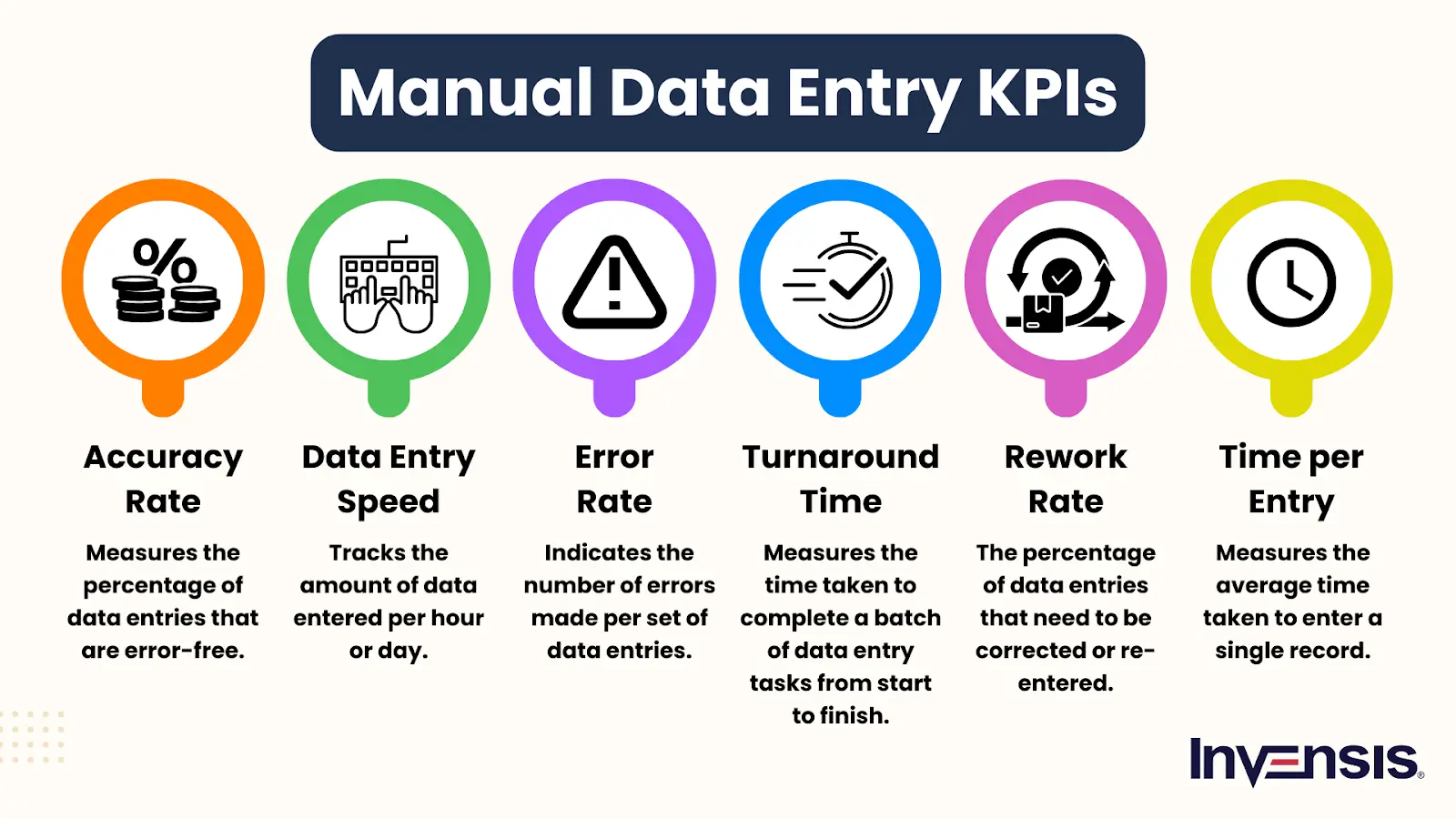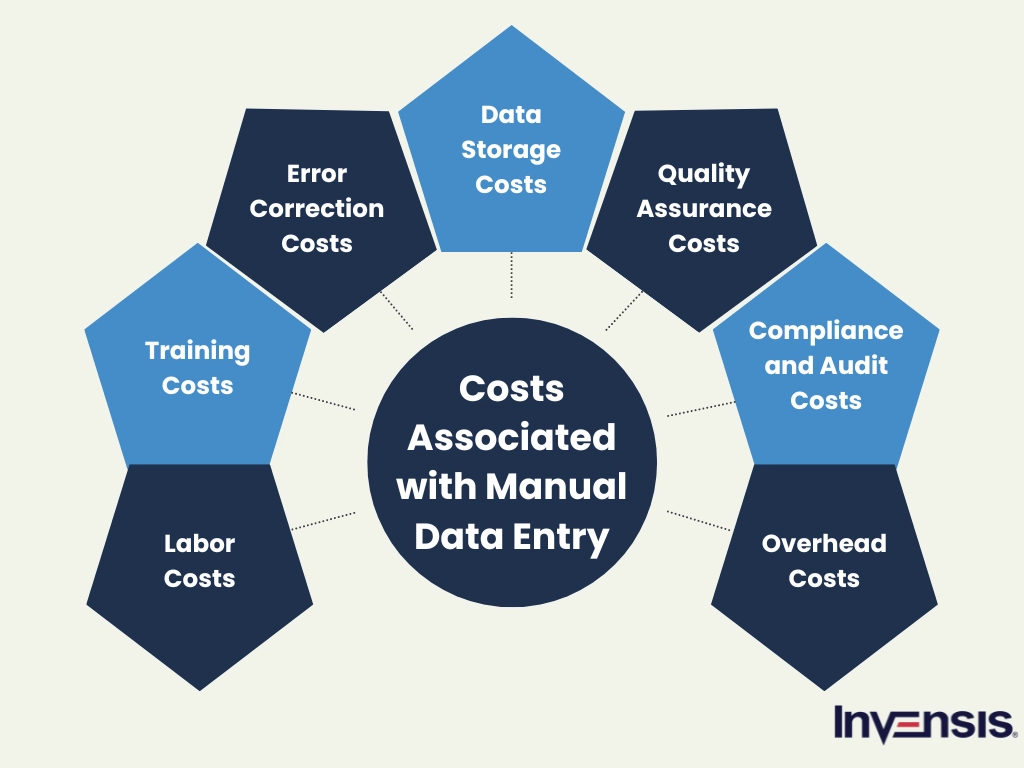
 Back Office
Back OfficeTop 6 Manual Data Entry Challenges and Ways to Overcome Them in 2025

Content
Manual data entry involves inputting information into a computer or system by hand, typically through typing or other manual methods. Despite advancements in automation, manual data entry remains essential in various industries, especially where complex or sensitive data requires careful handling and verification.
Inbound documents, whether feedback forms, catalogs, purchase orders, invoices, or any other type, are crucial to capture accurately. All relevant information from these documents must be input into software applications, Excel sheets, ERP applications, or cloud-based applications for further processing and utilization.
However, in 2024, businesses are implementing advanced techniques to avoid manual data entry challenges. They are banking on advanced software applications, automation tools, machine learning, etc. As we approach 2025, the trend towards automation continues to reshape data management practices across industries.
This blog will discuss manual data entry challenges and ways to overcome these challenges in 2025.
Manual Data Entry Challenges 2024-2025: How To Avoid Them
Manual data entry comes with several challenges for an organization when it comes to the quality of output, speed, accuracy, and other factors. Some of the manual data entry challenges that businesses are facing are:
1. Human Error
Traditionally, in manual data entry, businesses grapple with frequent human errors, leading to inaccuracies in records and reports. These errors often stem from typos, misinterpretations of handwritten data, or lapses in attention during data input. Many businesses have transformed into automated data entry processes through advanced software systems.
In the upcoming year 2025, advancements in AI and automation promise to further improve the system. Technologies like Optical Character Recognition (OCR) and AI-driven data validation will significantly reduce error rates, enhancing data accuracy and efficiency. Businesses will increasingly use these tools to streamline operations, mitigate risks associated with manual entry, and ensure reliable decision-making based on pristine data integrity.
2. Time-consuming
One of the manual data entry challenges is its time-consuming nature. Employees spend significant hours inputting data from various sources into systems. This leads to errors that can further delay processes. This challenge becomes increasingly cumbersome as data volumes grow, requiring more resources and time for accuracy checks and corrections. But, in 2024, several organizations are taking steps to overcome this challenge by embracing advanced software systems.
Advancements in automation, AI technologies, and machine learning are set to revolutionize data entry processes in 2025. Businesses will adopt smart data capture solutions that leverage OCR and natural language processing (NLP) to automate extraction and entry tasks. This shift promises significant time savings and enhanced accuracy through reduced human intervention, boosting overall productivity.

3. Inconsistent Data Quality
In traditional business practices, inconsistent data quality poses a significant manual data entry challenge. Human error, varying data formats from different sources, and lack of standardized procedures often result in inaccuracies and inconsistent quality in the entered data. Such low-quality data can lead to flawed analytics, decision-making, and operational inefficiencies. In 2024, businesses are combating this issue by implementing advanced verification and validation systems.
Looking forward to 2025, businesses are anticipated to implement AI-driven algorithms to detect and rectify inconsistencies in real-time. This will ensure data quality and integrity across systems. Moreover, the adoption of standardized data entry protocols and training programs will enhance employees' data handling skills, reducing the occurrence of errors at the source.
4. Higher Operational Costs
Higher operational costs is one of the major manual data entry challenges. This is because of several factors. Firstly, employing personnel dedicated to data entry incurs ongoing salary and training expenses. Secondly, the risk of errors inherent in manual processes necessitates additional resources for error detection, correction, and reprocessing, all of which escalate costs. Moreover, the time-intensive nature of manual data entry prolongs project timelines and reduces overall operational efficiency, resulting in missed opportunities and increased overhead.
In 2024, several businesses are banking on software tools to overcome this issue. Looking forward to 2025, businesses are expected to transition towards robotic process automation (RPA) and intelligent data capture systems. This will help streamline data entry tasks, reducing labor costs and minimizing error rates. This strategic shift improves financial viability and positions organizations to compete more effectively in a rapidly evolving digital economy.

5. Difficulty in Data Retrieval
In traditional business practices, manual data entry often leads to difficulty in data retrieval. It is one of the common manual data entry challenges. This will affect the timely access to critical information. Retrieving specific data points from voluminous and potentially disorganized manual records can be labor-intensive and error-prone. Employees may struggle to locate and extract relevant data quickly, hampering responsiveness to customer inquiries, regulatory requests, or internal reporting needs. But, in 2024, businesses are relying on digital databases to easily store and retrieve data.
In 2025, the landscape of data retrieval will be transformed with advancements in data management technologies. Businesses will increasingly adopt integrated database systems and cloud-based storage solutions that facilitate faster and more efficient data access. These technologies will incorporate advanced search functionalities and real-time analytics capabilities, enabling users to retrieve and analyze data swiftly and accurately.
6. Limited Scalability
Scalability is one of the manual data entry challenges that businesses face. As data volumes increase, the need for additional manpower to handle data entry grows proportionately. As businesses grow or experience seasonal fluctuations, the demand for data entry personnel may fluctuate, leading to challenges in maintaining consistent service levels. Scaling operations traditionally involve hiring and training additional staff, which can be costly and time-consuming.
Moving towards 2025, the scalability of data entry processes is set to evolve with the adoption of automated solutions. Technologies such as cloud computing, scalable database architectures, and AI-driven data processing will enable businesses to handle large volumes of data more efficiently. Automated data entry systems can dynamically adjust to fluctuating workloads, ensuring consistent performance and scalability without the need for extensive human intervention.
Conclusion
In 2025, manual data entry is expected to decline significantly as automation tools and AI-driven technologies continue to advance. However, it is still important in certain industries and areas. Businesses will bank on advanced verification and validation systems to streamline manual data entry processes. As a result, manual data entry tasks will become more specialized, focusing on exception handling and verification rather than routine data input.
Any small error can have a huge impact on data. Hence, several organizations depend on third-party service providers for manual data entry tasks to avoid manual data entry challenges. Outsourcing manual data entry tasks to specialized providers helps businesses leverage expert services to enhance accuracy, speed, and consistency. This approach reduces operational costs, frees up internal human resources, and allows companies to focus on their core competencies.
Invensis is a back-office BPO service provider with 24 years of experience, offering expert data entry services. We utilize advanced technology and skilled professionals to ensure accuracy, speed, and reliability in handling unstructured content and validation tasks. Our comprehensive manual data entry services help businesses reduce operational costs, enhance productivity, and focus on core activities while maintaining data integrity and consistency across all processes. Contact us today to streamline your data entry and boost productivity!
FAQs
Discover Our Full Range of Services
Click HereExplore the Industries We Serve
Click HereBlog Category
Related Articles

Find the leading accounting firms in Singapore trusted by businesses for audit, tax, and advisory services.
November 6, 2025
|

Explore the leading accounting firms in South Africa providing expert audit, tax, cloud accounting, and payroll services. Learn about their key features and unique offerings.
November 6, 2025
|

Explore what project accounting is, how it works, and why it’s essential for businesses. Understand key principles, revenue recognition methods, and best practices to improve your knowledge.
October 7, 2025
|
Services We Provide
Industries We Serve





.webp)